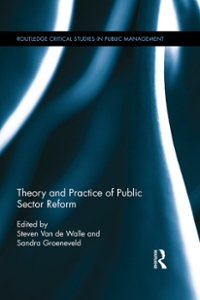Answered step by step
Verified Expert Solution
Question
1 Approved Answer
In contrast to the tradition writing of literaure review, student should apply reverse engineering technique: they will modily the introduction and the research question based
In contrast to the tradition writing of literaure review, student should apply reverse engineering technique: they will modily the introduction and the research question based on the chosen articles. Introduction Define or identify the general topic, issue, or area of concern, thus providing an appropriate context for reviewing the literature. Pointoutoveralltrendsinwhathasbeenpublishedaboutthetopic;orconflictsintheory,methodology, evidence, and conclusions; or gaps in research and scholarship; or a single problem or new perspective of immediate interest. Establish the writer's reason (point of view) for reviewing the literature; explain the criteria to be used in analyzing and comparing literature and the organization of the review (sequence); and, when necessary, state why certain literature is or is not included (scope). Body Group research studies and other types of literature (reviews, theoretical articles, case studies, etc.) according to common denominators such as qualitative versus quantitative approaches, conclusions of authors, specific purpose or objective, chronology, etc. Summarize individual studies or articles with as much or as little detail as each merits according to its comparative importance in the literature, remembering that space (length) denotes significance. Provide the reader with strong "umbrella" sentences at beginnings of paragraphs, "signposts" throughout, and brief "so what" summary sentences at intermediate points in the review to aid in understanding comparisons and analyses. Conclusion Summarize major contributions of significant studies and articles to the body of knowledge under review, maintaining the focus established in the introduction. Evaluate the current "state of the art" for the body of knowledge reviewed, pointing out major methodological flaws or gaps in research, inconsistencies in theory and findings, and areas or issues pertinent to future study. Conclude by providing some insight into the relationship between the central topic of the literature review and a larger area of study such as a discipline, a scientific endeavor, or a profession. ARTICLES: 15. Autor, D. H., D. Dorn, G. H. Hanson, and J. Song (2014). Trade adjustment: Worker-level evidence The Quarterly Journal of Economics, 129(4), pp: 1799-1860. Link: https://www.google.com/url?sa=t&rct=j&q=&esrc=s&source=web&cd=&cad=rja&uact=8&ved=2ahUKEwiJt6796ryCAxU1JhAIHbSnC4QQFnoECA0QAQ&url=http%3A%2F%2Fddorn.net%2Fpapers%2FADHS-TradeAdjustment.pdf&usg=AOvVaw27_-V0LRsf1VgFB6xxUW5R&opi=89978449 16. Bewley, T. (1995). A Depressed Labor Market as Explained by Participants. American Economic Review, 85(2), pp: 250-254. Link: https://www.jstor.org/stable/pdf/2117927.pdf?refreqid=fastly-default%3Adacff4f98079a09816310dab506600c7&ab_segments=&origin=&initiator=&acceptTC=1 18. Meer, J., and J. West (2016). Effects of the minimum wage on employment dynamics," Journal of Human Resources, 51(2), pp: 500-522 LINK: http://people.tamu.edu/~jmeer/Meer_West_MinimumWage_JHR-final.pdf 14. Autor,D.H.(2015).Whyaretherestillsomanyjobs?Thehistoryandfutureofworkplaceautomation. The Journal of Economic Perspectives, 29(3), pp: 3-30. Link: https://economics.mit.edu/sites/default/files/publications/why%20are%20there%20still%20jobs%202014.pdf 1. Autor, D. H., Katz, L. F., & Krueger, A. B. (1997). Computing Inequality: Have Computers Changed The Labor Market? NBER Working Paper Series, Working Paper 5956, National Bureau of Economic Research. Cambridge, MA. Link: https://economics.mit.edu/sites/default/files/publications/computing%20inequality%201998.pdf 2. Acemoglu, D. (1998). Why Do New Technologies Complement Skills? Directed Technical Change and Wage Inequality. The Quarterly Journal of Economics, 113(4), 1055-1089. Link: https://economics.mit.edu/sites/default/files/publications/why-do-new-technologies-complement-skills.pdf
Step by Step Solution
There are 3 Steps involved in it
Step: 1

Get Instant Access to Expert-Tailored Solutions
See step-by-step solutions with expert insights and AI powered tools for academic success
Step: 2

Step: 3

Ace Your Homework with AI
Get the answers you need in no time with our AI-driven, step-by-step assistance
Get Started


